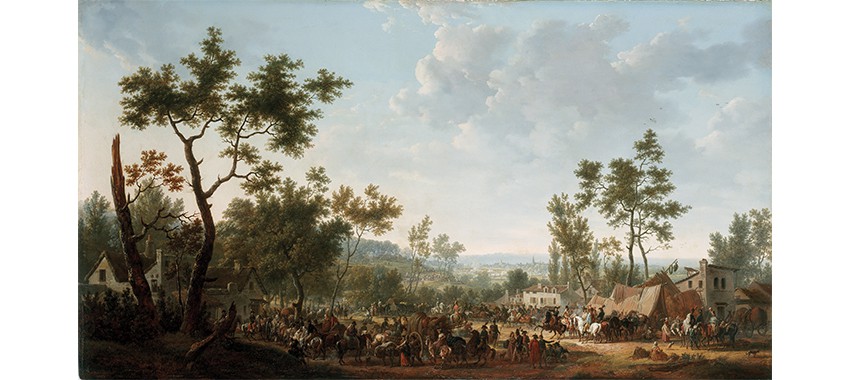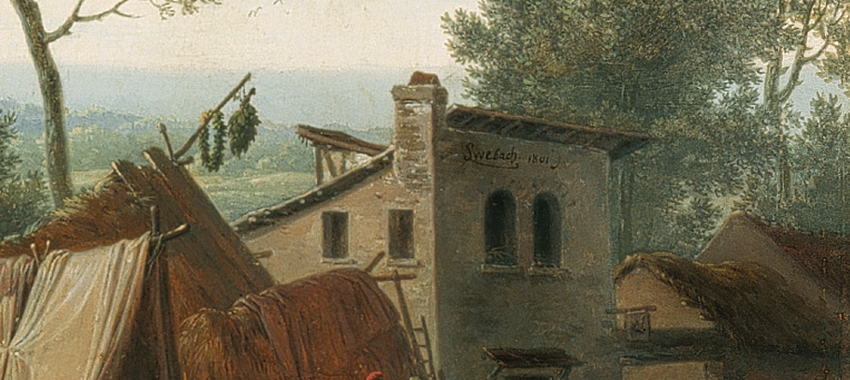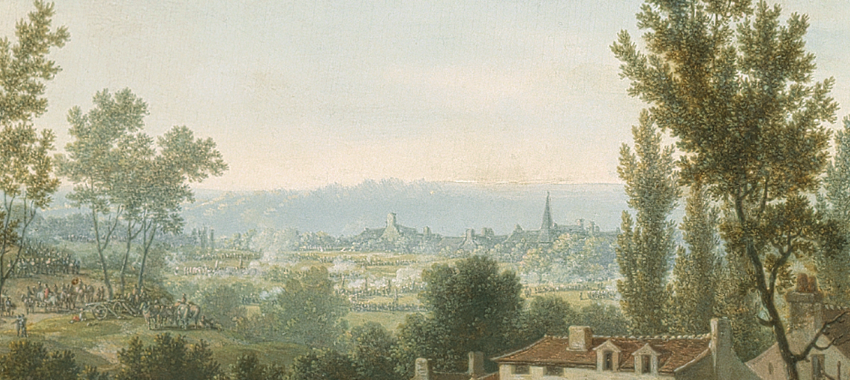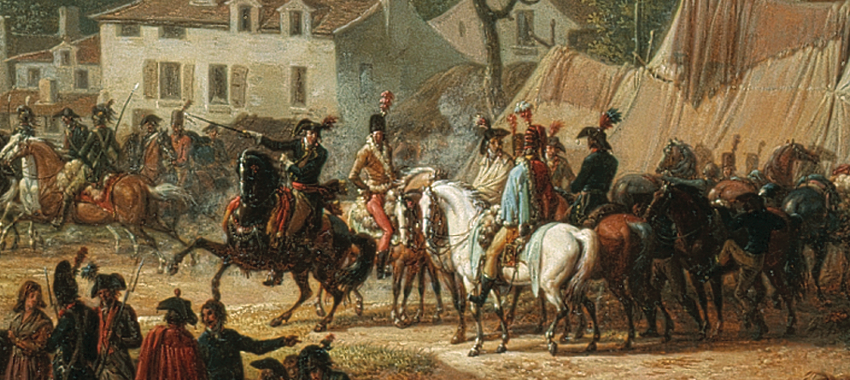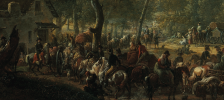The Battle of Marengo
Swebach-Desfontaines (1769-1823) aka : Jacques-François-Joseph Swebach
Oil on wood
Signed halfway up on right: “Swebach 1801”
H. 48 ; W. 87 cm
Inv.764, donation Lapeyre
The French Revolutionary Wars enabled Swebach to practise his talent as a draughtsman very early on, sketching from life, in pencil or ink, scenes which were then reworked in wash or watercolour. The Napoleonic campaigns next offered him multiple subjects and, abandoning the military anecdote for a while, he made a little foray into historical painting by depicting battles. In this way, at the Salon of Year X (1802), he exhibited two canvases, “La Bataille de Maringo” (sic), “Bataille de Zurich”, and a painted sketch, “La bataille du Mont-Thabor” (no. 267, 268 and 269 of the catalogue). Two of these paintings – Marengo and Mont-Thabor – found favour with the First Consul, who asked Vivant Denon to purchase them. These two works had no doubt already been sold, as there is no evidence to suggest that Denon was able to acquire them. The battles of Marengo and Zurich reappeared for public auction in Paris in 1995. For “La bataille de Marengo” at the Salon of 1802, Swebach had shown a precise episode in the fighting of 14 June 1800 – the arrival of Bonaparte at the moment a caisson explodes, Kellermann’s attack and the death of Desaix – i.e. the subject depicted by Lejeune in his painting presented to the Salon of 1801, and exhibited a second time in 1802 because of its success.
The Battle of Marengo kept in the collections of the Fondation Napoléon predates the painting of the Salon of 1802. This oil on panel, signed 1801, reveals the artist’s full talent as he here demonstrates his fascination with Dutch painting. Swebach chronicled the daily life of Napoleon’s armies on campaign. Troops on the march, rest-stops by soldiers and cavalrymen, vivandières, bivouacs, camps, and convoys of equipment and supplies were the painter’s preferred subject material. Using a miniature format, Swebach was able to lend scope to a vast composition, a remarkable landscape in which a multitude of groups are harmoniously arranged and depicted with minute attention to detail. The fine execution of the whole, the precision of the draughtsmanship and subtlety of touch make this little painting a masterpiece.
In 1803, Swebach painted a new version of the battle of Marengo for the Sèvres manufactury, on a plate (Sèvres Museum depository at the Malmaison Museum) and on a platter (Ermitage Museum), two works included in the Empress Josephine’s collections.
Photographs © Fondation Napoléon – Patrice Maurin-Berthier
